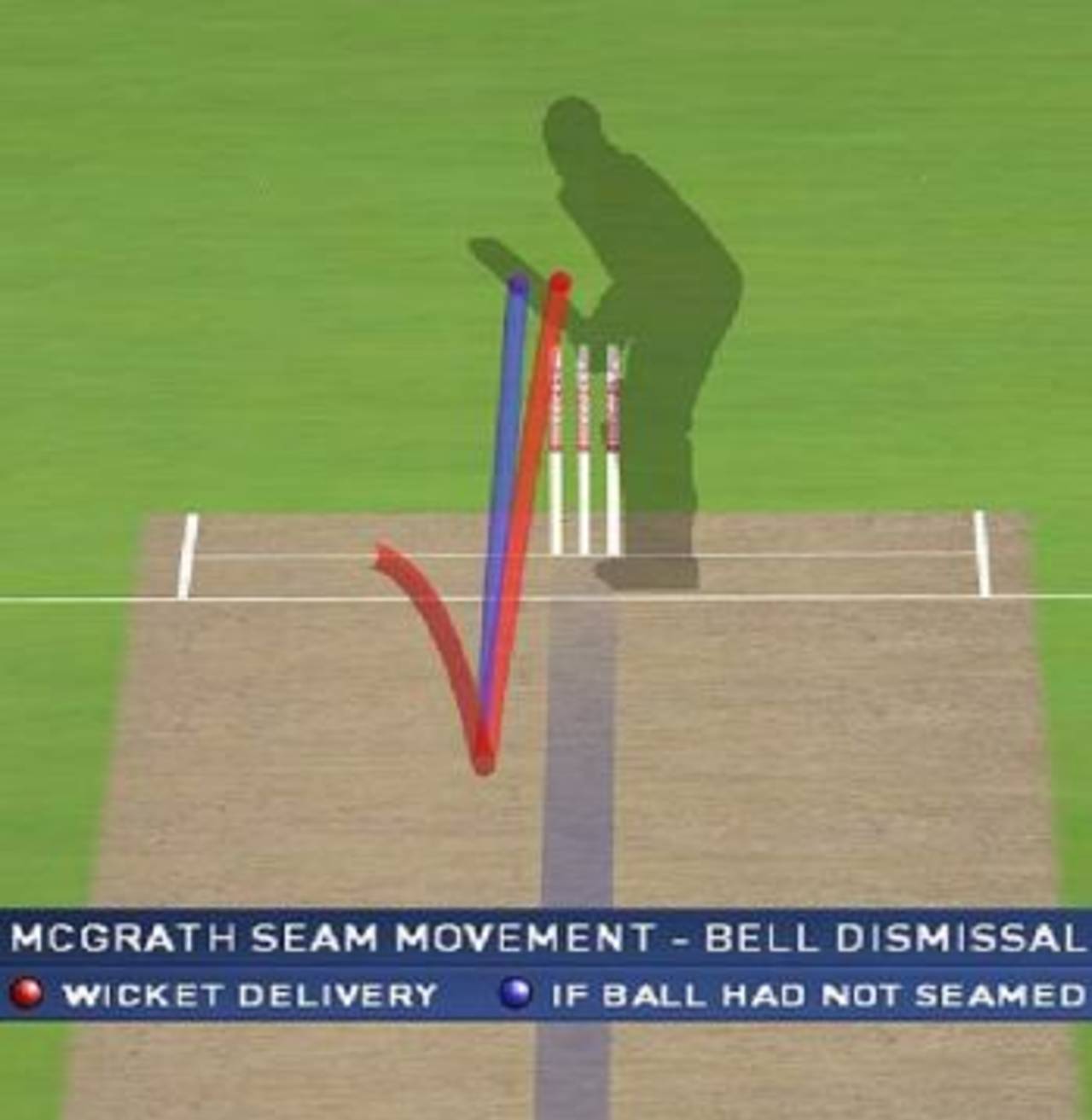Sutherland a fan of ball-tracking
Cricket Australia's chief executive, James Sutherland, believes cricket will hold itself up to ridicule unless technology used in the decision review system is consistent across all series
Brydon Coverdale
07-Sep-2011

Despite the recent Phil Hughes controversy, James Sutherland remains a fan of ball-tracking • Hawk-Eye Innovations
Cricket Australia's chief executive, James Sutherland, believes cricket will hold itself up to ridicule unless technology used in the decision review system is consistent across all series. However, Sutherland said he still supported the inclusion of Hawk-Eye in the DRS, despite an error with the ball-tracking during the first Test in Galle, when Phil Hughes was judged lbw in the first innings.
Replays indicated the ball that Hughes tried to sweep had turned before striking his leg, but Hawk-Eye instead showed the ball going straight on with the arm and hitting the stumps. Part of the problem was that the ball had travelled less than 40 centimetres between pitching and striking Hughes, which meant Hawk-Eye's prediction was not at its most accurate.
But there was no graphic that alerted TV viewers to that fact, whereas such a graphic had been used in previous cases, including at the World Cup. While the technology was not responsible for Hughes' dismissal - he was given out by the on-field umpire, Richard Kettleborough, and the third official, Tony Hill, did not find enough evidence to overturn the call - Sutherland said consistency was still required.
"We continue to see little quirks in the system," Sutherland said in Melbourne on Wednesday. "Part of that is that there isn't a consistency of application across all international cricket matches. That's something that I would like to see, consistency in the type of applications that are used, as in the breadth, but also in the specific types of technology.
"All those things are important. Until we actually get that consistency, I think we're going to find ourselves open to ridicule for not quite getting it right. It is partly a financial issue. There are other issues about access to equipment at the moment and some other concerns that member countries have."
Sutherland is preparing to head to London next week for ICC meetings, where he said the DRS was likely to be on the agenda. He said that despite the Hughes incident, ball-tracking was helping to improve the accuracy of umpiring decisions, and the most important thing was to ensure the batsman retained the benefit of the doubt.
"I'm very comfortable with the tracking," he said. "I think that we need to continue to have mechanisms by which umpires can make judgments about where the technology is not working, or falling down. One of my concerns is that under the laws of the game the batsman should always have the benefit of the doubt and he should never lose that benefit of the doubt. Sometimes perhaps, it would appear to me at least, that technology is confusing that."
Brydon Coverdale is an assistant editor at ESPNcricinfo